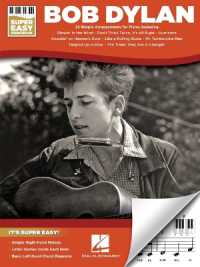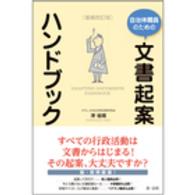Full Description
Essential, easy-to-implement tools for teachers to help improve literacy across the content areas, as mandated by the CCSS
Thinkquiry Toolkit 1, Second Edition, is a collection of teacher instructional practices, student learning strategies, and collaborative routines that improves reading comprehension and vocabulary learning in grades 4 through 12. Each practice, strategy, or routine is research-based, high impact, multi-purpose and effective in improving student learning across multiple content areas. It addresses the importance of the ability to read, write, speak, listen, and think well enough to learn whatever one wants to learn, to demonstrate that learning, and to transfer that learning to new situations. Thinkquiry Toolkit 1 iscomprised of five sections:
Overview of the Common Core State Standards for English Language Arts & Literacy and the related instructional shifts
Selecting the Right Tools for Maximum Learning
Laying the Foundation Before Reading/Learning
Building New Knowledge During Reading/Learning, and
Expanding and Deepening Understanding After Reading/Learning
If teachers collaboratively use these practices, strategies, and routines; teach them to students; and use them regularly across content areas, students will develop confidence and competence as readers, writers, and learners.
A division of Public Consulting Group (PCG), PCG Education provides instructional and management services and technologies to schools, school districts, and state education agencies across the U.S. and internationally. They apply more than 30 years of management consulting expertise and extensive real-world experience as teachers and leaders to strengthen clients' instructional practice and organizational leadership, enabling student success.
Contents
About PCG Education xi
Acknowledgments xiii
Introduction 1
PART 1: Overview of the Common Core State Standards for English Language Arts and Literacy and the Related Instructional Shifts 6
Introduction to the CCSS ELA & Literacy 6
Instructional Shifts Required by the CCSS ELA & Literacy 8
Key Elements in the Standards and Shifts 11
PART 2: Selecting the Right Tools for Maximum Learning 17
Content Teachers Are Key to Supporting Students to Become Better Readers, Writers, and Thinkers 17
Why Thinkquiry Tools Work with Students in Grades 4-12 18
The Literacy Demands of Diff erent Content Areas 23
The Connection between Vocabulary Development and Reading Comprehension 25
Tips for Using Thinkquiry Tools in Your Classroom 28
Designing Lesson Plans That Increase Content Learning 34
Evaluating Classroom Practice 38
Notes 43
Part 3: Laying the Foundation before Reading/Learning 44
Introduction 44
Knowledge Rating Guide 46
Knowledge Rating Guide Template 48
Knowledge Rating Guide Content Examples 49
Frayer Model 55
Frayer Model Example 56
Frayer Model Template 57
Frayer Model Content Examples 58
Triple-Entry Vocabulary Journal 59
Triple-Entry Vocabulary Journal Template 61
Triple-Entry Vocabulary Journal Content Examples 62
Word Sort 69
Word Sort Template 71
Word Sort Content Examples 72
Word Analysis 74
Word Analysis Template 76
Word Analysis—Frequent Affixes and Roots 77
Common Greek and Latin Roots in English 78
KWL Plus 80
KWL Plus Template 82
KWL Plus Content Examples 83
Quick Write 86
Quick Write Content Examples 88
Partner/Small Group Vocabulary Preview 89
Partner/Small Group Vocabulary Preview Template 91
Interactive Word Wall 93
Interactive Word Wall Planning Template 95
Interactive Word Wall Content Examples 97
Chapter Preview/Tour 101
Chapter Preview/Tour Template 102
Chapter Preview Content Examples 104
Anticipation/Reaction Guide 105
Anticipation/Reaction Guide Template 107
Anticipation/Reaction Guide Content Examples 108
Use of Triple-Entry Vocabulary Journal in a High School Science Classroom 109
PART 4: Building New Knowledge during Reading/Learning 112
Introduction 112
Question-Answer Relationship (QAR) 114
Question-Answer Relationship (QAR) Content Examples 116
Coding/Comprehension Monitoring 124
Coding/Comprehension Monitoring Template 126
Coding Content Examples 127
Two-Column Note Taking 133
Two-Column Note-Taking Template 135
Two-Column Note-Taking Content Examples 136
Question the Author (QtA) 143
Question the Author (QtA) Template 145
Question the Author (QtA) Content Examples 146
Analytic Graphic Organizers 147
Analytic Graphic Organizers for Vocabulary Development 150
Analytic Graphic Organizers for Patterns and Relationships 151
Analytic Graphic Organizers Content Examples 152
Semantic Feature Analysis 160
Semantic Feature Analysis Template 162
Semantic Feature Analysis Content Examples 163
Discussion Web (Social Studies) 164
Discussion Web Template 166
Discussion Web Content Examples 167
Proposition/Support Outline (Science) 168
Proposition/Support Outline Template 170
Proposition/Support Outline Content Examples 171
Inference Notes Wheel (English Language Arts) 172
Inference Notes Wheel Template 174
Inference Notes Wheel Content Examples 176
Think-Pair-Share 177
Think-Pair-Share Template 178
Think-Pair-Share Content Examples 179
Reciprocal Teaching 181
Reciprocal Teaching Template 183
Reciprocal Teaching Content Examples 184
Paired Reading 185
Paired Reading Content Examples 187
Critical Thinking Cue Questions 188
Critical Thinking Cue Questions Content Examples 193
Use of Coding/Comprehension Monitoring in an Elementary Social Studies Classroom 194
PART 5: Expanding and Deepening Understanding after Reading/Learning 197
Introduction 197
Role-Audience-Format-Topic (RAFT) 199
Role-Audience-Format-Topic (RAFT) Template 201
Role-Audience-Format-Topic (RAFT) Content Examples 202
Sum It Up 204
Sum It Up Template 206
Sum It Up Content Examples 207
Picture This! 210
Picture This! Template 212
Picture This! Content Examples 213
Save the Last Word for Me 214
Save the Last Word for Me Template 216
Save the Last Word for Me Content Examples 217
Give One, Get One, Move On 219
Give One, Get One, Move On Template 221
Give One, Get One, Move On Content Examples 222
Jigsaw 225
Jigsaw Template 227
Jigsaw Content Examples 228
Group Summarizing 229
Group Summarizing Template 231
Group Summarizing Content Examples 233
Problematic Situation 234
Problematic Situation Content Examples 236
Use of Sum It Up in an Elementary Mathematics Classroom 238
Use of Save the Last Word for Me in a Middle School English Classroom 240
References 243
Additional Resources 246






